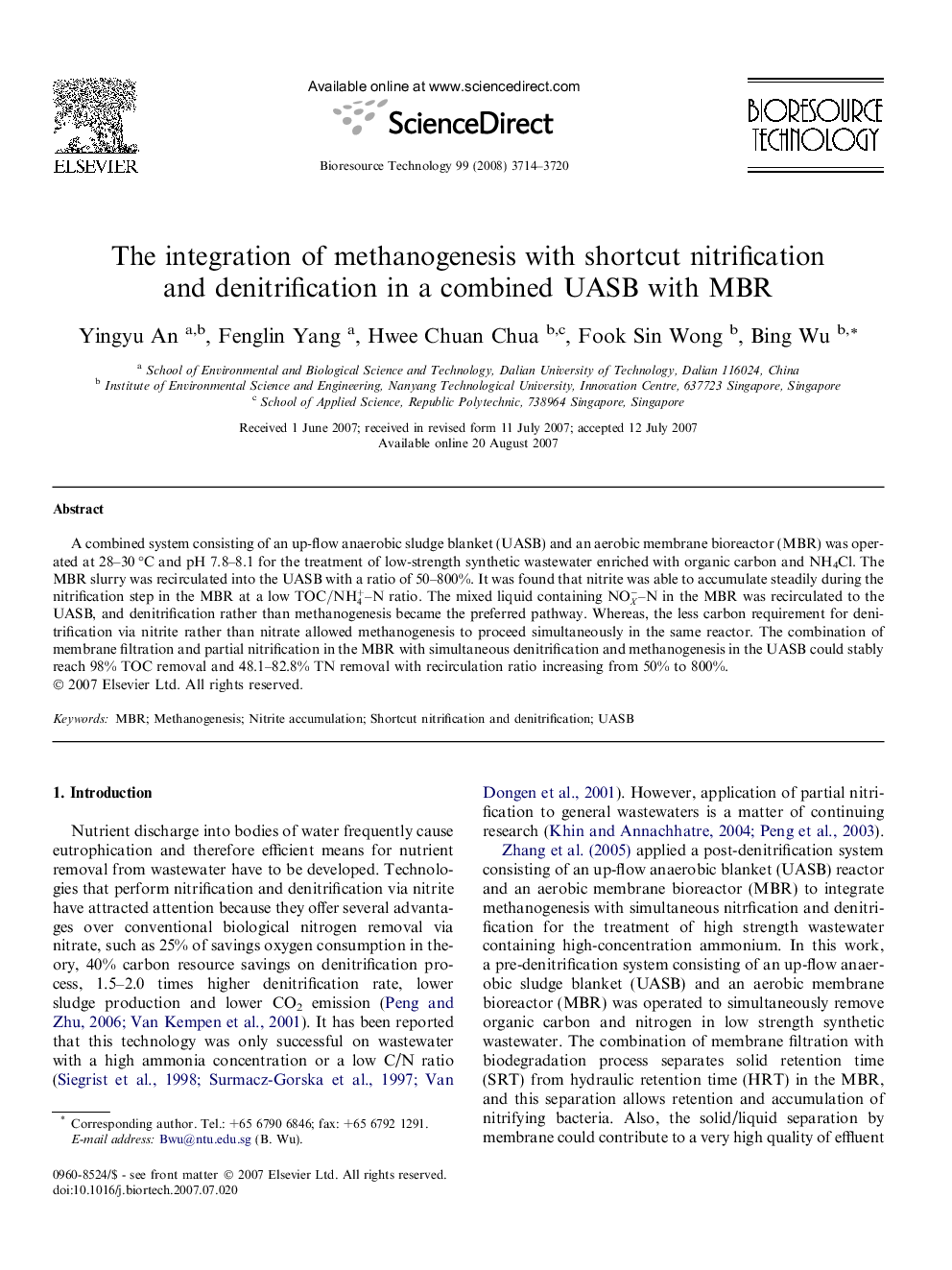| Article ID | Journal | Published Year | Pages | File Type |
|---|---|---|---|---|
| 686363 | Bioresource Technology | 2008 | 7 Pages |
A combined system consisting of an up-flow anaerobic sludge blanket (UASB) and an aerobic membrane bioreactor (MBR) was operated at 28–30 °C and pH 7.8–8.1 for the treatment of low-strength synthetic wastewater enriched with organic carbon and NH4Cl. The MBR slurry was recirculated into the UASB with a ratio of 50–800%. It was found that nitrite was able to accumulate steadily during the nitrification step in the MBR at a low TOC/NH4+–N ratio. The mixed liquid containing NOX-–N in the MBR was recirculated to the UASB, and denitrification rather than methanogenesis became the preferred pathway. Whereas, the less carbon requirement for denitrification via nitrite rather than nitrate allowed methanogenesis to proceed simultaneously in the same reactor. The combination of membrane filtration and partial nitrification in the MBR with simultaneous denitrification and methanogenesis in the UASB could stably reach 98% TOC removal and 48.1–82.8% TN removal with recirculation ratio increasing from 50% to 800%.
